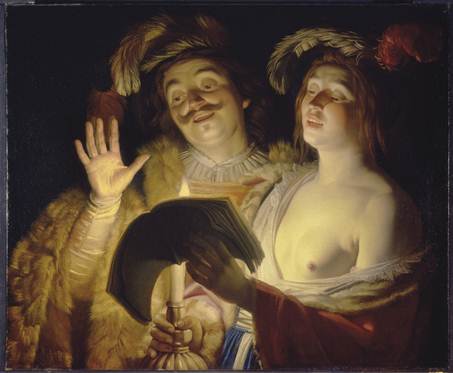Gerrit van Honthorst masterpiece seized by Nazis sells for record $3.4m

Your support helps us to tell the story
From reproductive rights to climate change to Big Tech, The Independent is on the ground when the story is developing. Whether it's investigating the financials of Elon Musk's pro-Trump PAC or producing our latest documentary, 'The A Word', which shines a light on the American women fighting for reproductive rights, we know how important it is to parse out the facts from the messaging.
At such a critical moment in US history, we need reporters on the ground. Your donation allows us to keep sending journalists to speak to both sides of the story.
The Independent is trusted by Americans across the entire political spectrum. And unlike many other quality news outlets, we choose not to lock Americans out of our reporting and analysis with paywalls. We believe quality journalism should be available to everyone, paid for by those who can afford it.
Your support makes all the difference.A 17th century Dutch masterpiece that graced the collections of Catherine the Great's art adviser and Russia's Hermitage Museum before being seized by the Nazis sold for nearly $3.4 million (£2.18 million) at auction, a record for the artist Gerrit van Honthorst.
The Duet, which was confiscated by the Nazis from Jewish art collector Bruno Spiro and sold in 1969 to the Montreal Museum of Fine Arts, fetched $3,371,750 including commission at Christie's Old Master auction on Wednesday.
The painting, which the Montreal museum returned to Spiro's heirs in April, has been estimated to sell for between $2 million and $3 million.
Nicholas Hall, Christie's co-chairman of Old Masters and 19th century art, called the 1624 work "a superlative painting on all levels, with its composition, condition and provenance."
Hall said the painting attracted multiple bidders, with four competing above the $2 million mark. The buyer was Johnny van Haefton Ltd., a London dealer specializing in Dutch and Flemish Old Master art.
Executed at the height of Honthorst's career, the painting is among the finest examples of the kind of nocturnal revelry for which the Dutch artist is celebrated, Christie's said.
It depicts a theatrically clad man and woman standing together over an open book, singing by candlelight. The woman's exposed breast and revealing garb, as well as the Utrecht setting, suggest that she is a courtesan and the man her client.
The Duet belonged to the collection of Count Alexander Stroganov of St. Petersburg, Catherine the Great's art adviser, during the 19th century. It was eventually housed at the Hermitage Museum before being nationalized after the Russian Revolution. The Soviet regime auctioned it in 1931 in Berlin and Spiro bought it soon after.
After World War Two it passed through several German private collections before being acquired by the Montreal museum.
Reuters
Join our commenting forum
Join thought-provoking conversations, follow other Independent readers and see their replies
Comments